27+ Sample Student Incident Report Forms
-
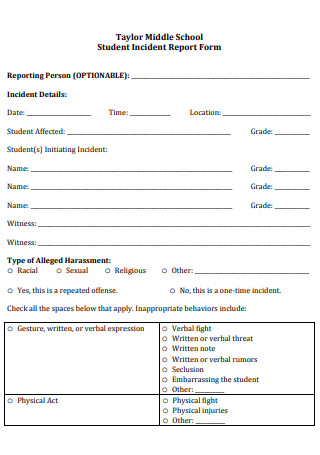
School Student Incident Report Form
download now -
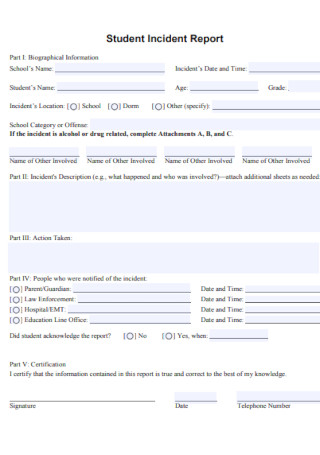
Sample Student Incident Report Form
download now -
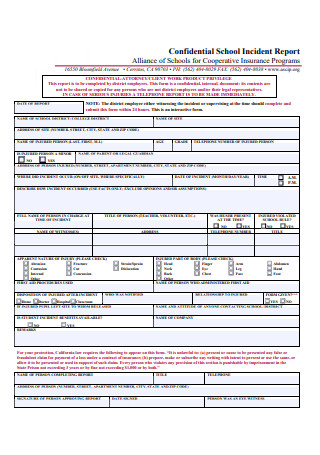
Confidential School Incident Report Form
download now -
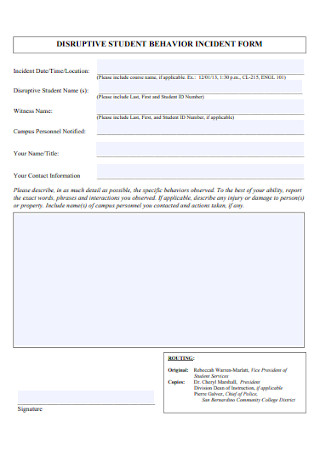
Student Behavior Incident Report Form
download now -

Student Disciplinary Incident Report Form
download now -
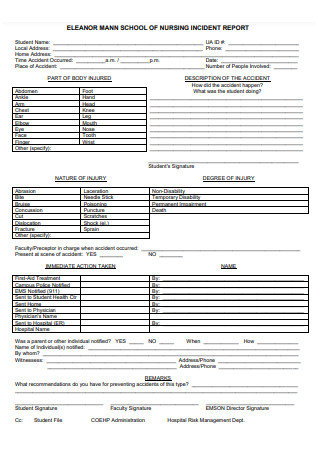
School of Nursing Student Incident Report Form
download now -

Student Restraint Incident Report Form
download now -
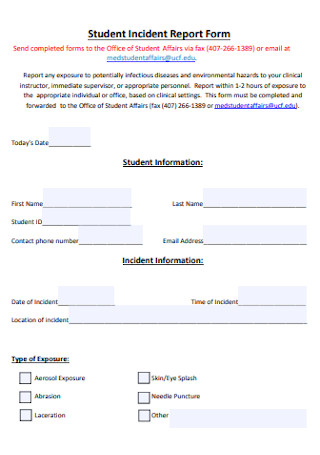
Medicine Student Incident Report Form
download now -
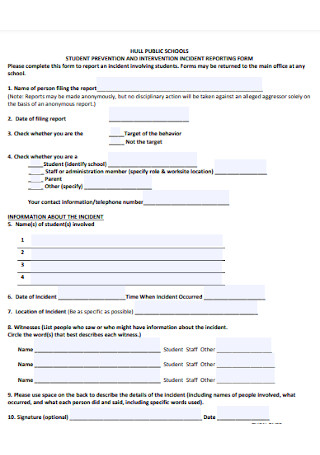
Student Intervention Incident Report Form
download now -
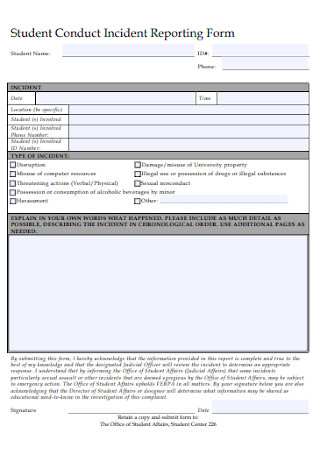
Student Conduct Incident Reporting Form
download now -
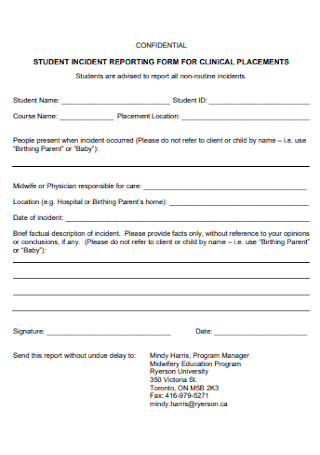
Student Incident Report Form for Placements
download now -

Student Incident Investigation Form
download now -

Student Organization Incident Report Form
download now -
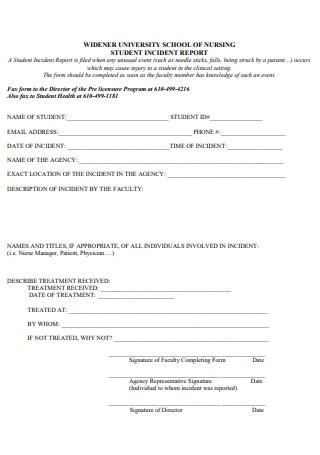
Nursing Student Incident Report
download now -
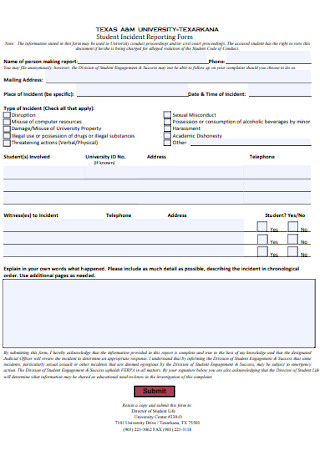
University Student Incident Reporting Form
download now -
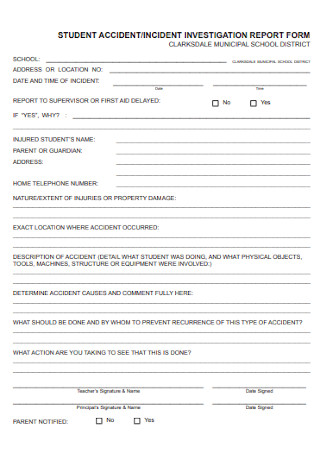
Student Accident Incident Report Form
download now -
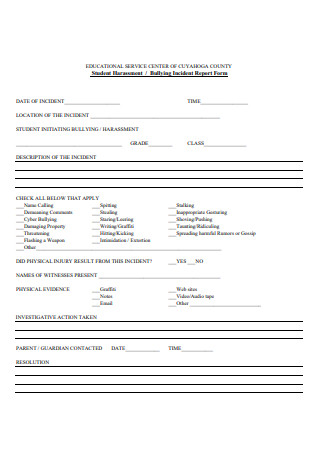
Student Incident Injurie Report Form
download now -
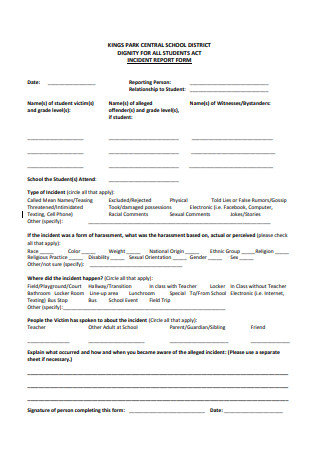
High School Student Incident Report Form
download now -
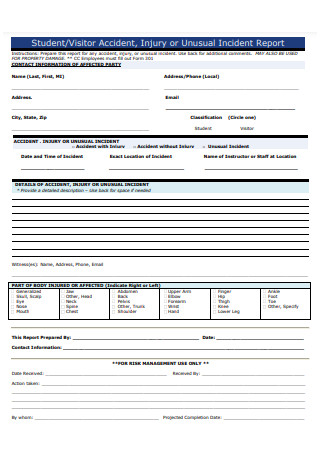
Student Unusual Incident Reporting Form
download now -
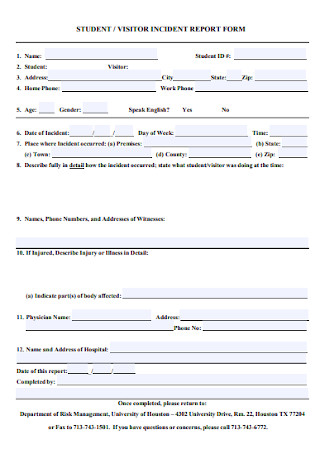
Student Visitor Incident Report Form
download now -
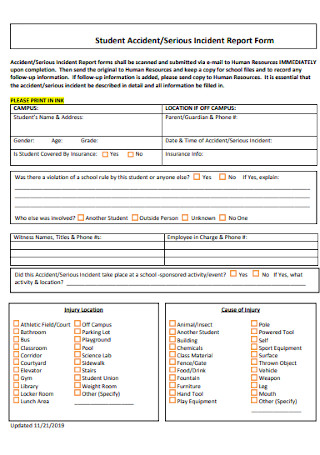
Student Serious Incident Report Form
download now -
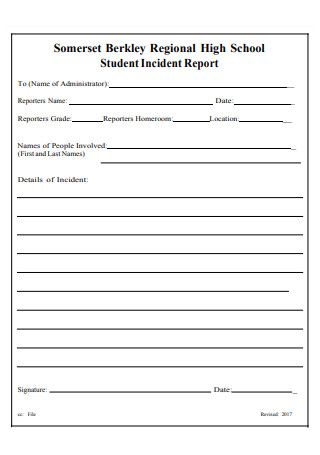
Simple Student Incident Report Form
download now -
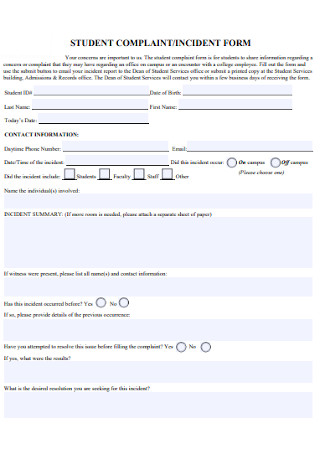
Student Compalint Incident Report Form
download now -
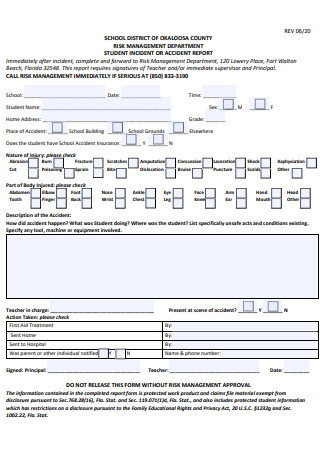
Student Bud Incident Report Form
download now -
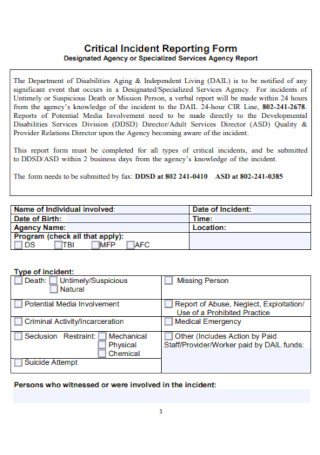
Critical Incident Reporting Form
download now -
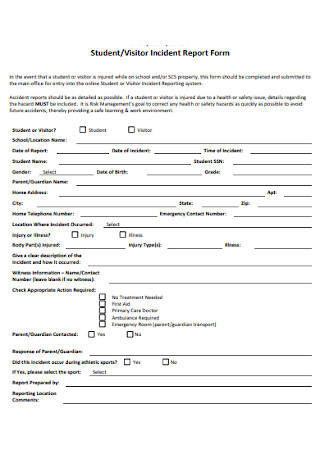
Student and Visitor Incident Report Form
download now -
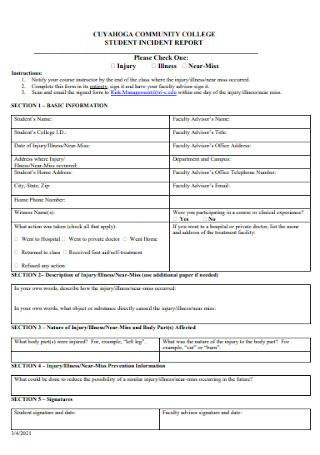
College Student Incident Report Form
download now -
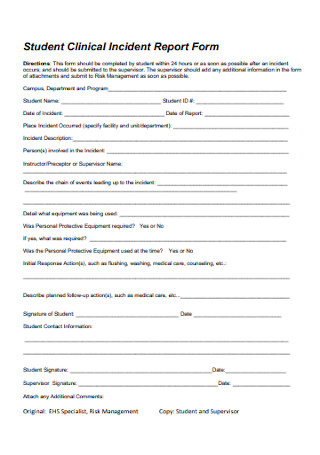
Student Clinical Incident Report Form
download now
FREE Student Incident Report Form s to Download
27+ Sample Student Incident Report Forms
What is a Student Incident Report Form?
What Benefits Can a Student Incident Report Form Do?
How to Write a Student Incident Report Form
What Makes an Effective Student Incident Report Form?
FAQs
Why is a student incident report form important?
What are the advantages of filing a report?
When is it appropriate to file a student incident report form?
What is a Student Incident Report Form?
An Incident Report can be written in response to any sort of incident. A remedial action, inquiry, hazard report, and review are generally included in the follow-up process. Near-miss events, injuries, safety observations, corrective measures, and follow-up procedures all need incident reporting, which is a vital element of any institution’s awareness, documentation, and action to ensure people work and stay safe in the school premises.
A student incident report form specifically focuses on the students and their involvement in the incident or how affected they are from the situation. Usually, a teacher or person of authority could be accompanying the student and something were to happen, so they would need to document the incident through a student injury report form.
What Benefits Can a Student Incident Report Form Do?
An incident report, no matter how big or little, is a document that details any unexpected incident, injuries, trauma, or illness. A school report is important so that authorities would know the basic information necessary to start their investigation. It saves the time and effort of the authorities so they could proceed to conduct their Investigation Report. Incident reports serve as a record of all occurrences and are beneficial to both parents and teachers for a variety of reasons. Having a well-managed incident report record has a few advantages:
How to Write a Student Incident Report Form
Now is finally the part where you are guided on the steps to write the student incident report form. If you feel overwhelmed by the responsibility to write it, don’t be. Remember, that as a safety measure, laying out the details of an incident in a thorough and comprehensive report could help the affected students and your academic institution in the long run. Check the sample of student incident report that can be found above in this article to view them. Other than the template, this article guides you through each step of the process.
Step 1: State Relevant Information
A school incident occurs within the grounds of the academic institution, that is the known fact. But what else should be placed right at the beginning of the document? You can start by stating the key information of the incident. Such as the date or when it occurred, the specific or closely estimated time of the incident, and the particular location of where students were affected by the incident. It is crucial for this step to have factual information and close to the specific instance so that when authorities review the report, they are able to note the events. Such as if there were injuries or bleeding, then the medical personnel are able to know and calculate the severity of the situation.
Step 2: List the Names of the Students Involved
The next step requires you to enumerate the names of the students that were affected by the incident. Whether they were in close proximity or not, if they felt an impact from the incident, then they need to be included. Keeping track of the student behavior incident can also help the authorities monitor their well-being or if they need immediate medical care, then a hospital or medical personnel can be contacted without delay.
Step 3: Define the Incident
This is the step that requires you to thoroughly explain and recount the incident with as many details as possible. Remember that the school and authorities would need a factual report so technical writing would be necessary for School Notes. Don’t include figures of speech or creative writing. Just focus on the actual details of the incident. Authorities may need to ask for follow-up questions but laying the groundwork is necessary for them to get the picture of what had happened prior to their involvement.
Step 4: Add Credibility
For a student incident report form to be credible, you as the person making the report need to add in your information such as the name you are addressed as, your institutional position, and active contact information. As well as the date and signature of when you filed the report to the higher-ups. This is for the purpose that if authorities or the school need your testimony, then at least you can back up the information on the report.
What Makes an Effective Student Incident Report Form?
According to Lets Build, identifying the five Ws (who, what, when, where, why) and H (how) are essential components of an effective report, and all academic institutions, organizations, or even companies are likely to emphasize them during the document’s composition. But what else is there so that your student incident report form can be considered effective? Read on to find out.
It is a known fact that safety should be upheld wherever a large group of people can be found. Most especially companies or institutions where safety routes, discipline, necessary equipment, and the alike have to be ready in case of incidents or emergency situations. Earth Networks states five safety tips for schools to know.
You can use it as a Safety Checklist of sorts to keep track of its necessity. Educators, administrators, and other school personnel must not only teach students about the world but also safeguard them from some of its most dangerous incidents.
FAQs
Why is a student incident report form important?
A prompt student incident report form is important in documenting immediate incidents as well as prevent similar situations that may occur. If anything happens, teachers and staff should be encouraged to fill out incident reports since the process and information may help the affected students and alert authorities of what happened during the incident.
What are the advantages of filing a report?
Through a behavior incident report, the student will be tracked. Behaviors that are concerning can be recognized. These are actions that are out of the ordinary or improper. Threats that are urgent will be met with immediate action. A difference can be established between conduct that demands urgent attention and behavior that necessitates a student intervention plan. It may be part of a School Contract to file out necessary documents.
When is it appropriate to file a student incident report form?
The unspoken and initiative role that teachers and staff have is to file an incident report immediately after first aid has been conducted to the affected students or when emergency personnel has been alerted. This is due to the fact that as more time passes, then the recollection of the event may be less fresh and lead to an unconscious fabrication of details. Although it may not be intentional, some lapses of the memory can occur and lead to a lack of details upon filing the report.
In order to stay organized in terms of documentation and paperwork, it is more than necessary to write up a student incident report form. Not only would it provide assistance to authorities upon reviewing the incident but it can also validify that the school and the employees have the initiative to watch over the welfare of their students. Finding the student incident report example to be useful, this site also offers other available documents for you to use as a reference. Feel free to visit the site and check out other samples or formats.
